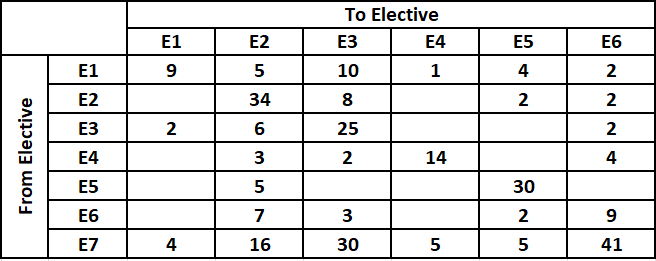1. A premier B-school, which is in process of getting an AACSB accreditation, has 360 second year students. To incorporate sustainability into their curriculum, it has offered 3 new elective subjects in the second year namely Green Supply Chain, Global Climate Change & Business and Corporate Governance. Twelve students have taken all the three electives, and 120 students have taken Green Supply Chain. There are twice as many students who study Green Supply Chain and Corporate Governance but not Global Climate Change & Business, as those who study both Green Supply Chain and Global Climate Change & Business but not the Corporate Governance, and 4 times as many who study all the three. 124 students.study Corporate Governance. There are 72 students who could not muster up the courage to take up any of these subjects. The group of students who study both Green Supply Chain and Corporate Governance but not Global Climate Change & Business is exactly the same as the group made up of the students who study both Global Climate Change & Business and Corporate governance. How many students study Global Climate Change & Business only?
Show Similar Question And Answers
 Further, the following are known:
1. Before the change process there were 6 more students in E1 than in E4, but after the reshuffle, the number of students in E4 was 3 more than that in E1.
2. The number of students in E2 increased by 30 after the change process.
3. Before the change process, E4 had 2 more students than E6, while E2 had 10 more students than E3.How many elective courses among E1 to E6 had a decrease in their enrollments after the change process?
Further, the following are known:
1. Before the change process there were 6 more students in E1 than in E4, but after the reshuffle, the number of students in E4 was 3 more than that in E1.
2. The number of students in E2 increased by 30 after the change process.
3. Before the change process, E4 had 2 more students than E6, while E2 had 10 more students than E3.How many elective courses among E1 to E6 had a decrease in their enrollments after the change process? Powered By:Omega Web Solutions
Powered By:Omega Web Solutions